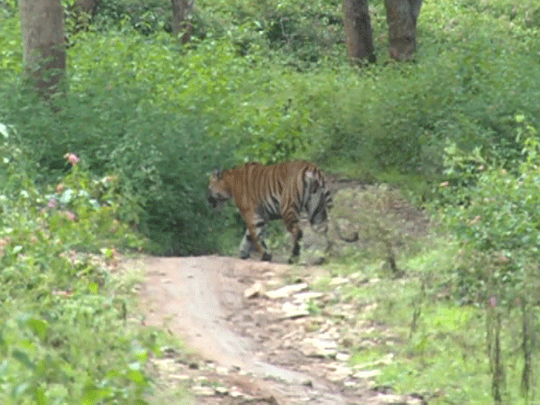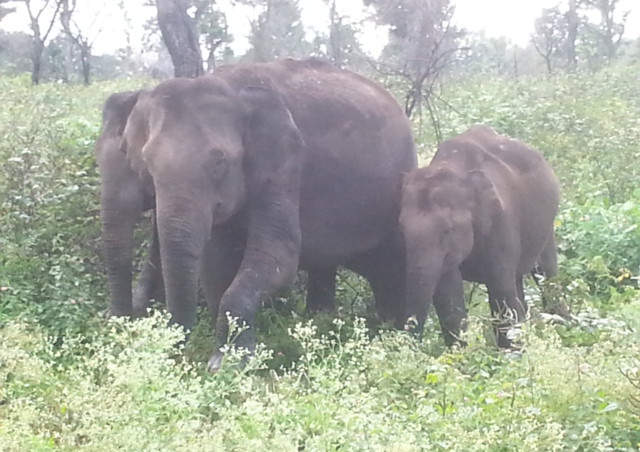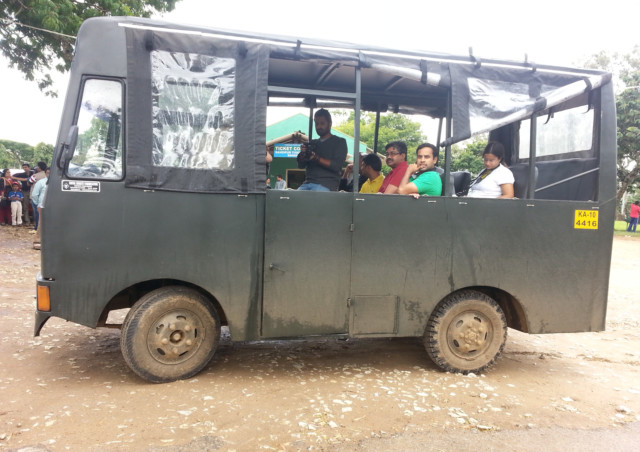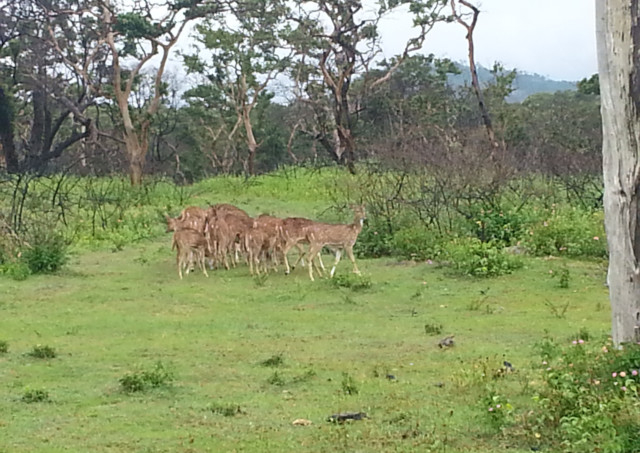
“Nothing,” Sanjay Srikantan said with an air of resignation as the driver turned the ignition key and our 16-seater safari bus trundled through the thick rain-soaked forest, its engine coughing and whirring on the dirt track.
We were in the 874sqkm Bandipur Tiger Reserve, located in the south Indian state of Karnataka and Srikantan, the wildlife activity manager of our host, Country Club, was getting increasingly restless.
Thrice we had stopped at a thicket, our ears strained to pick the softest hiss of the leaves. Thrice our driver had to restart and move on.
Dusk was approaching rapidly and we still looked nowhere remotely close to spotting a tiger. Another false lead and it would be been time to return to our cottages, not that I minded it.
The overnight Abu Dhabi-Bengaluru flight followed by a gruelling six-hour road trip had left me exhausted. I wanted to unwind, perhaps even catch a quick nap — and my secluded cottage offered the perfect idyllic retreat.
We had arrived at the picturesque Bush Betta Country Club Resort around noon and barely rounded off a sumptuous meal when I was told we must leave for the safari.
And now here I was with ten others, including Country Club’s affable managing director Y. Rajeev Reddy, hurtling through the jungle and scouring every undergrowth that fell our way for a distinct striped pattern.
I noticed that unlike some other wildlife parks in India, the Bandipur Tiger Reserve is managed pretty well. Only official vehicles are allowed. The rules are strict, no getting out of the vehicle. For good measure, I thought.
Long-tailed monkeys trapezed around the trees, chattering with frenzied excitement as we drove past a herd of startled deer before stopping near an escarpment where some elephants were busy grazing. It was a family of three — a big bull, cow and calf.
For a long moment, the adult pachyderms regarded us with rheumy eyes, their ears flapping lazily as they gently swung from one fore front to another.
But as our cameras started clicking, their primal parenting instinct took over. Ears pricked, trunks rolled, they put the young calf between them and braced for a full-bloodied charge.
Make no mistake. With its swinging gait, an elephant can reach a top speed of 40kmh. Its trunk contains over 40,000 muscles, enough to squash your car to pulp and crush every single bone in your body with a single blow.
“Last month, an elephant nearly toppled our safari jeep. Luckily no one was hurt,” Srikantan said. The warning was not lost on us and we left the scene.
Deeper into the jungle we stumbled upon an angry warthog and then a gang of enormous bisons (gaur, actually) with crescent-shaped horns. I was about to dismiss them as big, fat, lazy animals but changed my opinion when I saw them effortlessly bound away, I daresay, faster than many horses.
As our vehicle negotiated a sharp bend, Srikantan abruptly jumped up in the front seat and stiffened with attention.
“Quiet,” he snapped, pointing towards a dense tuft of tall grass a few paces ahead. As if on cue, the driver cut the engine and a hush fell over the passengers. Excitement was an indigestible ball in the stomach and a dryness in the throat as we looked in the direction of the thicket.
Was this going to be another false alarm, I wondered, when suddenly the bushes quivered and the most majestic of all predators walked out.
It looked nonchalantly at us with harsh sunflower yellow eyes, slashed its tail back and forth a couple of times and, deciding we weren’t worth knowing, slipped away into the wilderness.
But for me it was sight I wouldn’t forget in a hurry.
DID YOU KNOW: India has roughly half of the world’s 3,000-odd tigers.












